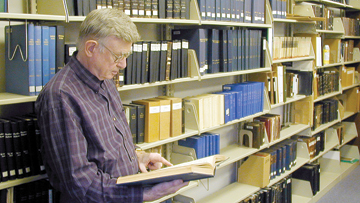For many decades, items of historical significance to Reformed Presbyterians have found their way to the Reformed Presbyterian Theological Seminary (RPTS) in Pittsburgh, Pa. It is a logical depository for such items. But it was not until a few years ago that a room within the seminary building was dedicated to a Reformed Presbyterian archive. For the last five years, three volunteer archivists—David Carson, Ralph Joseph, and John Mitchell—have been working to organize the collection.
The initiative for establishing Covenanter archives originated with Synod’s Church History Committee and remains under their supervision. Present members of this committee are David Weir, Phil Pockras, and Tom Reid.
When items are received, files are created to organize the information. To date, there are approximately 200 files for RPCNA congregations, some of which have long been officially disorganized, and about 300 files for ministers and missionaries. Other files are topical ...
